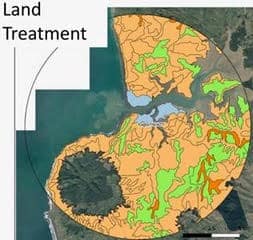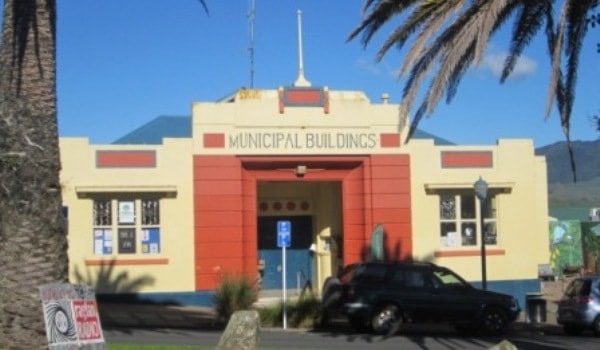John Lawson of Whaingaroa Environmental Defence says that even before the first sewage public meeting on Wednesday 10th July (4-7 Raglan Town Hall Supper Room – also Saturday 13th July from 10-noon in the Library), the many options have been cut by Waikato District Council to a ‘long list’ of five, which he has put into a pdf. Council’s also done a list of reasons to reject the other options. John says to let him know if you’d like to see it.
The ‘long list’ doesn’t mention composting toilets, or stopping stormwater overloading the system. The affordability column only shows ‘Low’, or ‘Very high’, but gives no idea what that means for rates.
One of the problems is algae, which clog up the ponds and are planned to have a ‘tertiary membrane’ added soon, to remove them so that the ultra violet cleaner can work better. Floating wetland plants can reduce the problem by removing nutrients, yet that is not offered as an alternative. Relevant links are –http://waterclean.co.nz/wastewater-treatment/https://www.kauriparknurseries.co.nz/planttypes/wetland-plants/https://nativeawa.com/floating-wetlands-nz-wetland-plants/https://www.livingwater.net.nz/catchment/lakes-areare-ruatuna-rotomanuka/floating-wetlands-trial/https://www.indiawaterportal.org/articles/treating-sewage-plants
For the land disposal option, the map to the right, showing geology/soils within 10km of Raglan, will probably be shown on Wednesday. So far I’ve seen nothing about what the colours mean. You might like to compare it with Regional Council’s map showing where effluent spreading is lower risk (in green).

Below the ‘long list’ I’ve shown how Raglan’s current consent compares with others in the District. Can you see the logic in the variety of consents? Do you know of better examples elsewhere?
Council staff seem to be hinting that the new consent application will be no better than the present for output from the sewage works. Any improvement will depend on where it goes.
The current resource consent and a 2014 report on the extent to which WDC was complying with it, give an idea of the issues. They don’t though consider how all those nutrients could be an asset, rather than a problem.
John is asking people as to what other information they could you do with to help you take part in deciding the future of the sewage works? And what other ideas have people got?
WED Secretary: John Lawson, 51 Cliff St, Raglan 07 825 7866 email johnragla@gmail.com

